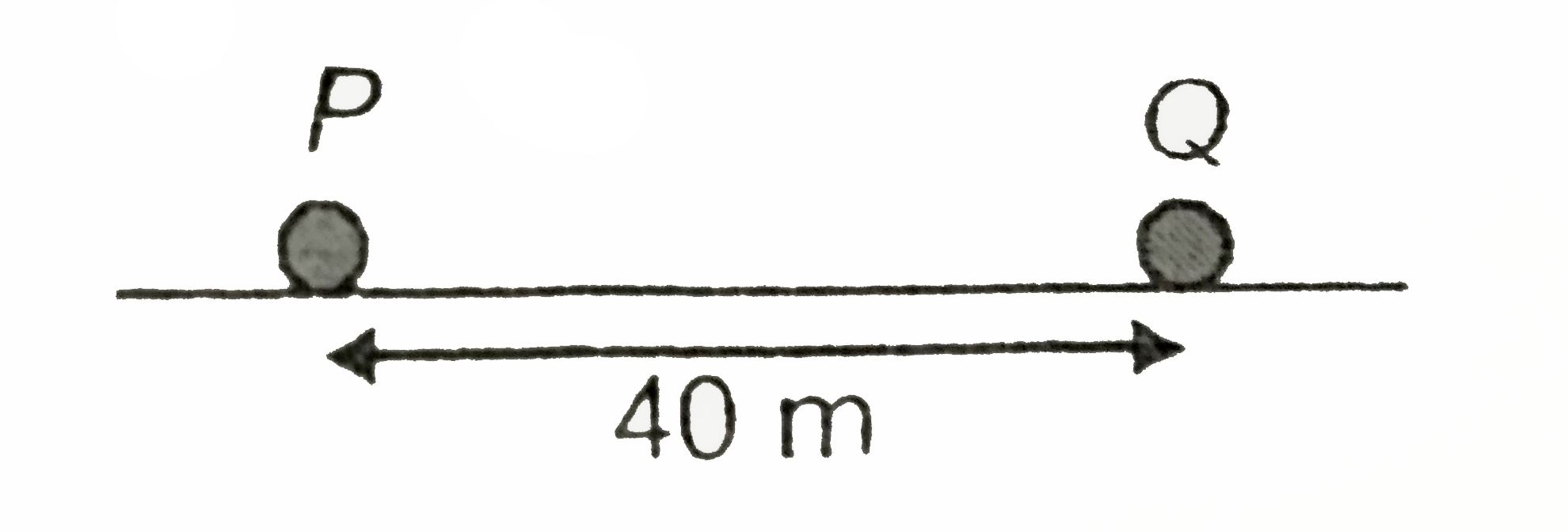Two objects P and Q, travelling in the same direction start from rest. While the object P starts at time t = 0 and object Q starts later at t = 30 min. The object P has an acceleration of 40km/h2. To catch P at a distance of 20 km, the acceleration of Q should be
40km/h2
80km/h2
100km/h2
160km/h2
The correct Answer is:D
To solve the problem, we need to find the acceleration of object Q such that it can catch up to object P after starting 30 minutes later.
Step 1: Determine the time taken by object P to travel 20 km
Object P starts from rest with an acceleration of 40km/h2. We can use the second equation of motion:
S=Ut+12At2
Where:
- S=20km
- U=0km/h (initial velocity)
- A=40km/h2
- t is the time in hours.
Substituting the values into the equation:
20=0+12×40×t2
This simplifies to:
20=20t2
Dividing both sides by 20 gives:
1=t2
Taking the square root of both sides, we find:
t=1hour
Step 2: Determine the time available for object Q to catch up
Since object Q starts 30 minutes (or 0.5 hours) after object P, it has:
1hour−0.5hours=0.5hours
to catch up to P.
Step 3: Use the equation of motion for object Q
Object Q also starts from rest and needs to travel the same distance of 20km in 0.5hours. Using the same equation of motion:
S=Ut+12A′t2
Where:
- S=20km
- U=0km/h
- A′=acceleration of Q
- t=0.5hours
Substituting the values:
20=0+12A′(0.5)2
This simplifies to:
20=12A′×0.25
Which further simplifies to:
20=18A′
Multiplying both sides by 8 gives:
A′=160km/h2
Conclusion
The acceleration of object Q required to catch up with object P is:
160km/h2
- S=20km
- U=0km/h (initial velocity)
- A=40km/h2
- t is the time in hours.
- S=20km
- U=0km/h
- A′=acceleration of Q
- t=0.5hours
Topper's Solved these Questions
Similar Questions
An object undergoes an acceleration of 8m/s2 starting from rest. Find the distance travelled in 1 second.
View SolutionTo particles P and Q are initially 40 m apart P behind Q. Particle P starts moving with a uniform velocity 10 m/s towards Q. Particle Q starting from rest has an acceleration 2m/s2 in the direction of velocity of P. Then the minimum distance between P and Q will be
 View Solution
View Solution
Knowledge Check
- Question 1 - Select One
Two objects move in the same direction in a straight line. One moves with a constant velocity v1. The other starts at rest and has constant acceleration a. They collide when the second object has velocity 2v1. The distance between the two objects when the second one starts moving is :-
AzeroBv212aCv21aD2v21a - Question 2 - Select One
Two objects move in the same direction in a straight line. One moves with a constant velocity V1.The other starts at rest and has constant acceleration a. They collide when the second object has velocity 2V1.The distance between the two objects when the second one starts moving is :
AZeroBV212aCV21aD2V21a - Question 3 - Select One
The mass of an object P is double the mass of Q. If both move with the same velocity, then the ratio of K.E. of P to Q is
A1:2B2:1C1:4D4:1
If the relation between acceleration and time for an object is given by
a=2t+4t2
Calculate the position of object from the origin at t = 4 s. Assume the object to be at rest at t=0.View SolutionTwo objects P and Q when placed at different positions in front of a concave mirror of focal length 20 cm, form real images of equal size. Size object P is three times size of object Q. If the distance of P is 50 cm from the mirror. Find the distance of Q from the mirror.
View SolutionAn object A starts from rest and moves with acceleration a_(1).Two seconds later,another object 'B' starts from rest and moves with an acceleration a_(2) .If the displacement of A in the 5th second is the same as that of B in the same interval,the ratio of a_(1) to a_(2)is
View SolutionAn object is taken from a point P to another point Q in a gravitational field:
View SolutionTwo object are initially at rest on a frictionless surface. Object 1 has a greater mass than object 2. The same constant force start to act on each object. The force is removed from each object after it accelerates over a distance d. after the force is removed from both objects, which statement is correct (p:momentum, K: kinetic energy)?
View Solution

